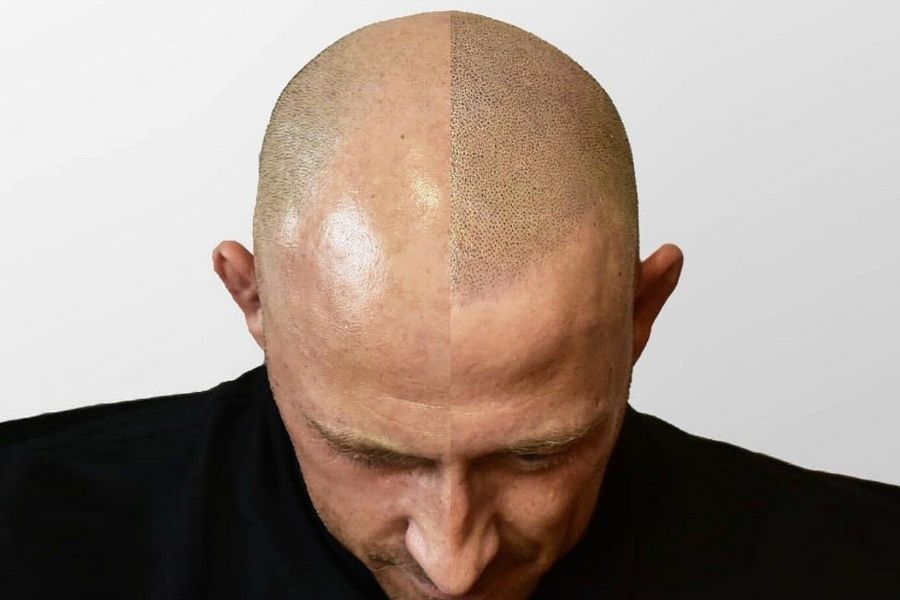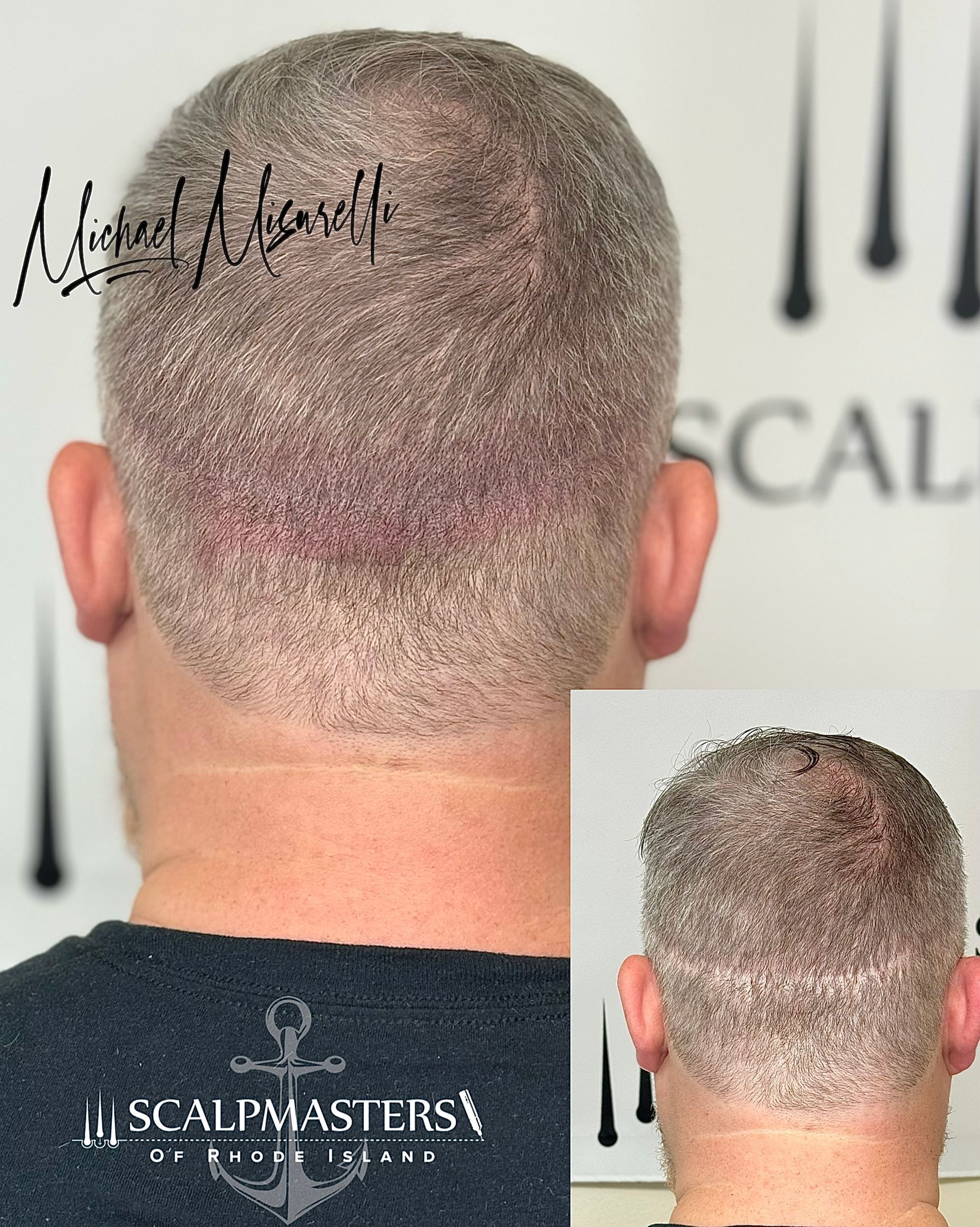White Bulb At End Of Hair - What It Is and What You Can Do
Club Hair: What It Is and What You Can Do
Have you ever noticed that small white bulb at end of hair? Whether you are experiencing pattern baldness and showing signs of hair loss with regularity, or you simply have a few strands lying on the pillow when you wake up in the morning, you may have found that some of those hairs have a small white bulb at the end of them. This white bulb at end of hair is called a club hair, and it essentially is a hair that includes a bit of protein on the end of it that is supposed to root the hair to the scalp. When you lose a club hair, it just means that you have lost a piece of hair that is in the telogen phase of the hair growth cycle.
Here's what you need to know about that white bulb at end of hair:
What is the White Bulb at End of Hair?
The white bulb at the end of your hair is essentially a bundle of protein, known as keratin. The role of the white bulb is to help the hair follicle root to the scalp, which then allows the hair to grow until it is shed.
It's important to keep in mind that the white bulb is not the actual hair root, but rather, the protein bulb that is present during a specific phase of the hair growth cycle. This protein bulb is the closest part of the hair follicle that attaches to the root.
Losing one or two club hairs every once in a while is not a cause for concern. However, excessive loss of club hairs may be an indication that you are suffering from pattern baldness. It also can be one of the first signs and symptoms of alopecia, an autoimmune condition that results in total hair loss.
In short, try not to panic if you see that white bulb at the end of your hair. But, if you are seeing these club hairs more often then not, you might want to consult with a hair restoration specialist who can help you come up with a solution that will allow you to look and feel your best.
What are the Hair Growth Cycle Phases?
Losing a hair with a white bulb at the end of it is an indication that the hair was in the telogen phase of the hair growth cycle. In order to better understand how your hair grows, develops and sheds, it's important to know the various phases of the hair growth cycle. These phases include:
- Anagen — The anagen phase is an active phase of growth in which the hair cells divide rapidly and the length of the hair strand is determined. Most hair follicles are in the anagen phase for two to six years before moving onto the next phase of the hair growth cycle.
- Catagen — The catagen phase begins when the anagen phase ends, and it is largely defined as a traditional stage. The hair strand is in this phase for a much shorter period of time, only about two to four weeks. During the catagen phase, hair growth stops.
- Telogen — The telogen phase is a resting period. During this phase, a new hair is developing and beginning the anagen phase. It pushes the strand away from the follicle with the white bulb.
- Exogen — The exogen phase is when the hair strand falls out. There is generally an anagen hair that immediately replaces it.
Keep in mind that not all of your hair is going to be in the same phase of the growth cycle at once. In fact, you may lose up to 100 strands of hair per day and not be experiencing pattern baldness or permanent hair loss. At any given time, approximately 80 percent of your hair is in the anagen phase, while the other strands are in the other three phases of the hair growth cycle.
Why Does My Hair Fall Out with a White Bulb?
As long as it is not happening excessively or you are not noticing it on every hair strand that falls out, losing hair with a bulb at the end of it is perfectly normal. It just means that you lost the hair in the third phase of the hair growth cycle rather than during the fourth phase. There are sometimes environmental factors that can impact hair loss. Those include:
- Damage done to the hair through color dying, bleaching or using excessive products.
- Overexposure to the elements, including the sun and heat.
- Insufficient protein in your daily diet.
If you are noticing that most of your hairs are falling out with a white bulb at the end of it, it may be time to contact a hair restoration specialist to learn more about the options that are available to you.
Will Hair with a White Bulb Grow Back?
This One of the most common misconceptions about the white bulb is that many believe it to be the hair root. However, it is not the root, simply the protein bulb at the end of the hair that was closest to the root. In most cases, hair with a white bulb at the end of it will grow back — there is very likely a new anagen hair right behind it.
What Should I Do If I am Experiencing Hair Loss?
It's easy to feel like you simply have to accept the new look that comes from pattern baldness, but the bottom line is, you have options when it comes to hair loss. If you are looking for a hair restoration solution, consider scalp micropigmentation. This innovative procedure is a precise application that is administered to the head, creating the illusion of darker, thicker hair follicles. It can be used to treat pattern baldness, receding hair lines and visible scar tissue on the head. Scalp micropigmentation also can create the appearance of fuller, thicker hair. For more information about this non-surgical scalp grooming procedure, contact Scalpmasters of New England today to schedule your free consultation appointment.
Learn More
What's New
Latest Hair Loss Solutions & Guides

Michael Misurelli, the founder has over 25 years of experience working as a licensed barber and is both certified and experienced to perform and perfect Scalp Micropigmentation.
Contact Information
Mon - Sun: 9:00am - 7:00pm
845 Oaklawn Ave Unit 103, Cranston, RI 02920
Resources
Locations
All Rights Reserved | Scalpmasters RI.



